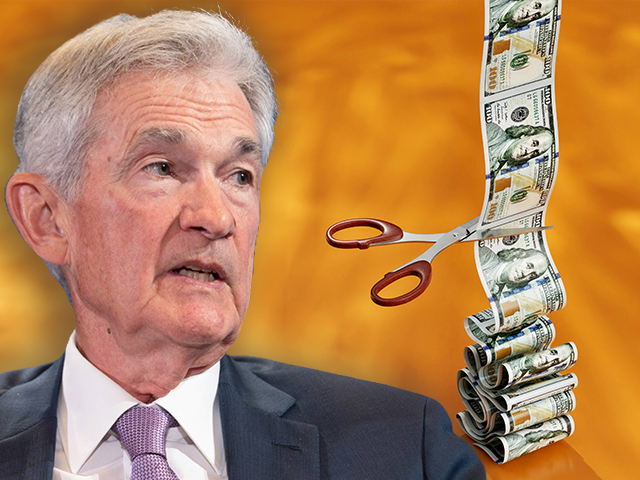Fed’s Will Be Pushed to Adopt Bigger for Longer Cuts
The Federal Reserve’s decision on Wednesday to begin lowering interest rates raises the question of how fast rates should be expected to decline.
Wall Street has become convinced that current policy rates are highly restrictive. Even after the half-point cut this week, the current stance of policy is considered too tight.
The source of this view is a bit mysterious. The three models maintained by the Atlanta Fed suggest that the neutral rate—which would be neither stimulative or restrictive—would be between 3.5 percent to 4.8 percent given the current state of inflation and unemployment. We’re now at the top of that range, and the projections of Fed officials have us going all the way down to 3.4 percent by the end of next year.
Yet many analysts at the big banks continue to insist that the Fed is still unnecessarily risking an economic slump and higher unemployment. This has created the very odd situation in which Wall Street is essentially in agreement with Elizabeth Warren—who pushed for a 75 basis point cut this week—when it comes to interest rates.
Of course, this assumes that the Fed’s current stance should be neutral rather than restrictive. The Fed itself appears to be inclined to this view, confident that inflation is headed down to two percent and that an unnecessary weakening of the labor market is now a greater risk than a re-ignition of inflation.
Fed Chairman Jerome Powell himself made it clear that interest rates will be coming down not just a little bit but for the foreseeable future.
“The direction of travel is clear, and the timing and pace of rate cuts will depend on incoming data, the evolving outlook and the balance of risks,” the chairman said in a speech in Jackson Hole.
Election Pressure to Do Another Big Cut
Many on Wall Street are convinced that the Fed has started the journey late. This was at the heart of the argument for a 50 basis point cut. If the Fed’s current rate is far too restrictive and the Fed is already late to cutting, then moving rapidly toward neutral may be prudent. This argument also supports the case for not just one 50 basis point cut but a series of them.
In a note sent out prior to the Fed announcement, Aditya Bhave of Bank of America argued that the notion of the Fed doing a single 50 basis point cut followed by smaller cuts doesn’t make much sense.
“[If] the goal is to lower rates meaningfully faster than 25bp cuts per meeting would allow, the Fed needs to do two or three consecutive 50bp cuts. That means if the Fed goes 50bp, the 2024 median dot is likely to show 125 or 150bp of cuts. That’s more dovish than markets, which are pricing about 115bp of cuts this year at the time of this writing,“ Bhave argued.
Bhave also pointed out that the politics of doing a 50 basis point cut just prior to the election followed by a smaller cut afterward could be messy. If Trump were to win the election, the Fed moving to smaller cuts might be seen as an attempt to undermine the new administration’s economic growth agenda.
“Typically, we believe Fed policymakers when they say that political considerations do not impact their policy decisions at all. But if there is a regime change in November, the optics of immediately downshifting to 25bp cuts – two days after the elections – would be problematic, in our view,” Bhave explains.
Now we know the Fed did decide to announce a large cut. If Bhave’s analysis is right, we should likely expect a similarly sized cut in November or December.
For his part, Powell insisted that Wednesday’s 50 basis point cut should not be seen as binding precedent for future cuts.
“I don’t think anyone should look at this and say, ‘This is the new pace,’” Powell said.
The futures market, however, is pricing in at least 75 basis points more in cuts by the end of the year, bringing the target range down to 4.00 percent to 4.25 percent and an outside chance of 100 basis points. With just two more meetings, that suggests at least one more 50 basis point cut.
The median projection of Fed officials indicates an expectation that the target range will come down to 4.25 percent to 4.50 percent, an outcome the futures market gives just a 29 percent chance of happening. In other words, the market thinks the Fed is still too hawkish about Fed policy.
Looking further out, the market is pricing in a lot more in cuts than Fed officials are forecasting. The median Fed forecast for the end of next year is for a policy rate of 3.4 percent. Futures prices imply there being just an 85 percent chance the policy rate will be lower than that, perhaps lower than three percent.
So, who is right? Powell’s Fed has shown an extreme reluctance to set policy more hawkishly than the market is pricing in. If that continues, the Fed may very well wind up cutting more than it expects this year and next.

COMMENTS
Please let us know if you're having issues with commenting.